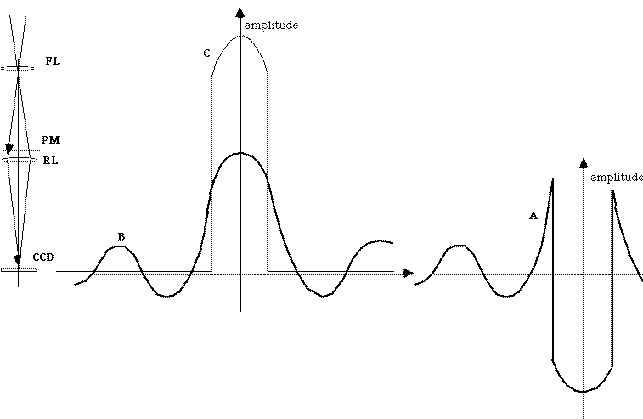

Figure 1: Principle of the Roddier & Roddier phase mask coronagraph. FL field lens with phase mask in the image, PM opaque pupil diaphragm, RL, relay lens, CCD : detector in the relayed image. As seen in the vibration amplitude profile across the star's Airy pattern, the phase mask changes the vibration sign in the central part of the peak (A). The transmitted vibration distribution may be considered as the difference of the unmasked distribution (B) and twice the masked part of it (C). Diffraction being a linear transformation, in terms of vibration amplitudes, the corresponding difference is also found in the relayed pupil. The first term is the unaffected pupil image and the second is a broadened version of it, the amplitude of which can be balanced to cancel the star light as much as possible within the geometrical pupil. The balancing is achieved by adjusting the diameter of the phase mask, and possibly by attenuating the field outside of the phase mask. An aperture mask and re-imaging lens similar to those used by Lyot produce a cleaned field image where the star's diffraction rings are attenuated 10 or 100 times.